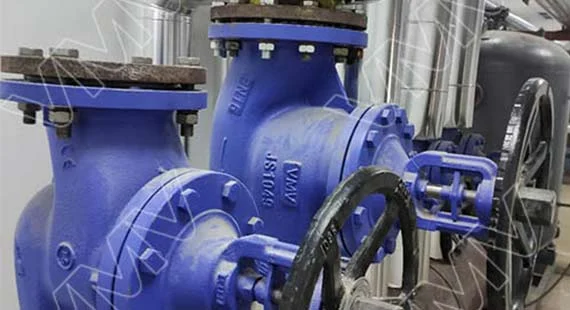From water supply systems to power plants, valves are a vital component of underground system infrastructure. While all valves share the same basic purpose, their design and construction vary depending on the specific application. Underground valves are critical infrastructure components in urban water supply systems. Their primary function is to control and distribute water from the main supply line to various end users. Valves are also used to regulate pressure and flow within the system and to isolate sections of the network for maintenance or repair.
What valves are used in underground pipelines?
Gate valves
They shut off and open the flow of fluid by raising and lowering the gate disc. Suitable for controlling large-diameter, high-pressure, high-temperature, or low-temperature fluids, they are widely used in underground pipelines in industries such as water conservancy, power generation, and the chemical industry. They offer significant advantages when complete shutoff of flow is required, such as in large water supply and drainage systems, where they can be used to shut off main pipelines for maintenance or overhaul.
Globe valves
Flow is controlled by moving the valve stem up and down, causing the disc to open or close its seat. Although globe valves offer excellent sealing performance, they have high opening and closing torques, making them difficult to open. They are not suitable for media containing particles, high viscosity, or prone to coking. They play an important role in underground pipeline systems in the chemical and petroleum industries, often used where precise flow control is required, such as controlling the flow of various liquid raw materials in chemical production.
Check valves
Automatically open and close using the medium’s own force. Their primary function is to prevent backflow of the medium, protecting pipelines and equipment. Installing a check valve on the underground pipeline at the pump outlet prevents backflow when the pump stops, potentially damaging the pump. Check valves are also installed where multiple branch pipelines converge to prevent backflow and impact the normal operation of other branch pipelines.
Steam traps

Automatically drain condensate while preventing steam from escaping. Commonly used in underground steam pipelines, they remove condensate from steam, improving steam system efficiency and ensuring the normal operation of steam equipment.
When selecting an underground valve, consider the following key factors:
Operating Conditions
Medium: Determine whether the medium is gas, liquid, or other special media, such as corrosive, toxic, or flammable or explosive substances.
Temperature: Select high- or low-temperature resistant materials based on the medium’s temperature. For example, chromium-molybdenum alloy steel is recommended for high-temperature steam, while austenitic stainless steel is recommended for low-temperature liquefied gas.
Pressure: Ensure the valve’s nominal pressure exceeds the maximum operating pressure of the piping system to ensure safe operation.
Environmental Conditions
Soil Corrosion: Consider the potential for soil corrosion on the valve housing and select corrosion-resistant materials such as gray cast iron, ductile iron, or stainless steel.
Groundwater Level: For areas with high groundwater levels, select valves with excellent sealing properties to prevent groundwater infiltration.
Sealing Performance
Internal Leakage: For hazardous media such as gas, valves must be leak-free under high pressure to ensure safety.
External Leakage: The valve’s exterior must be absolutely sealed to prevent leakage and environmental contamination.
For more information about valves, please contact us. Newton’s professional technicians can answer your questions.

